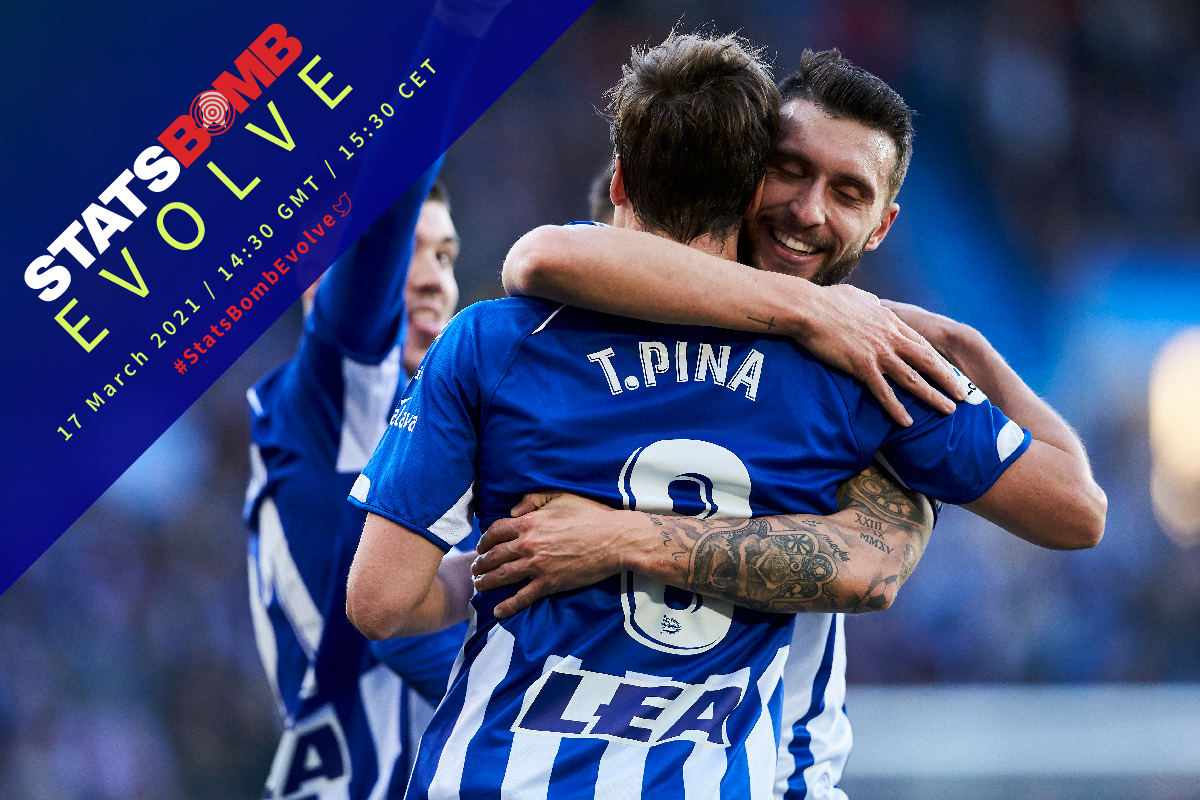Having as much information as possible about how a pass is made has obvious utilities for both opposition and recruitment analysis. Going beyond the start and end location, knowing which foot and what height the pass is played at adds important context and creates a clearer picture of the game being played. To give you an idea of what's possible with this information, we’re going to look at passing trends on both a team and player level in the 'Big 5' leagues.
On March 17th 2021, we will bring you the latest innovations to come out of StatsBomb at our free online event StatsBomb Evolve, including upgrades to our current dataset and the launch of our revolutionary new data product StatsBomb 360. In the build up, we’re looking at some of the unique data points that already make StatsBomb Data the clear best in the industry, and the obvious choice for smart clubs and analysts.
As well as collecting which foot a pass is played with, StatsBomb Data also has qualifiers for the height of pass. These are categorised as ‘High’ - above shoulder height, ‘Ground’ – passes in which the ball doesn’t leave the grass, and ‘Low’ – a pass that leaves the grass but below shoulder height. An easy place to start would be to compare which teams in the 'Big 5' could be considered “long ball” teams and which prefer to keep it on the deck. We can make stylistic comparisons at a team level but also a league level to see if there’s any discrepancies between each competition.
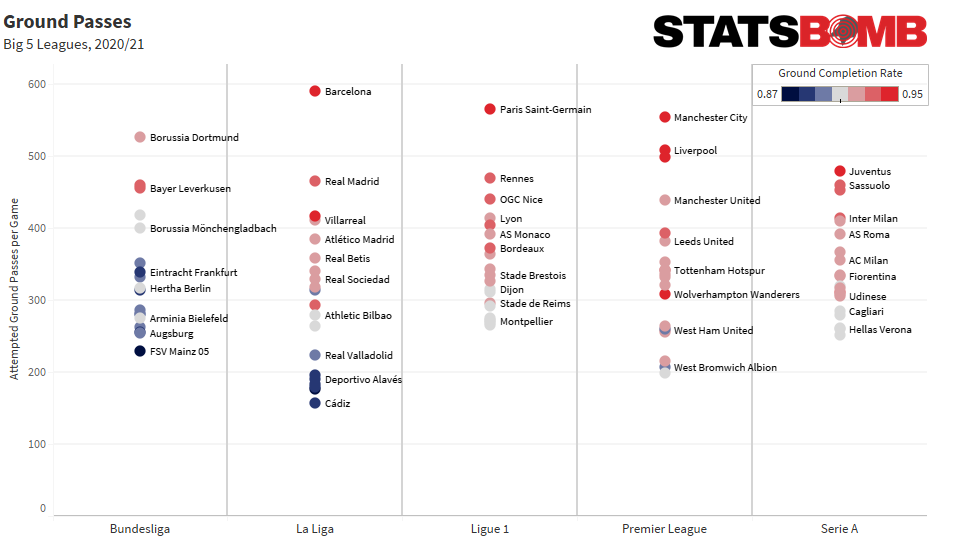
Starting with the teams that prefer to keep it on the grass. No major surprises at the top here: Barcelona, Paris Saint-Germain and Manchester City make up the top three for Ground pass volume on a per game basis. La Liga has the biggest spread of approaches in possession. You’d win no prizes for guessing Barcelona and Real Madrid would lead the way in this metric, but perhaps more surprising is that seven of the bottom 10 teams for Ground Passes per game in the 'Big 5' Leagues come from the Iberian Peninsula.
The other three are, more predictably, from the Premier League, with Burnley, West Brom and Newcastle all appeasing the loud demands from the terraces to “stop messin’ abaaat wiv it”. Following that theme, we can also examine which teams like to launch it into the air and play over rather than through the opposition, by looking at the volume of High passes each team makes.
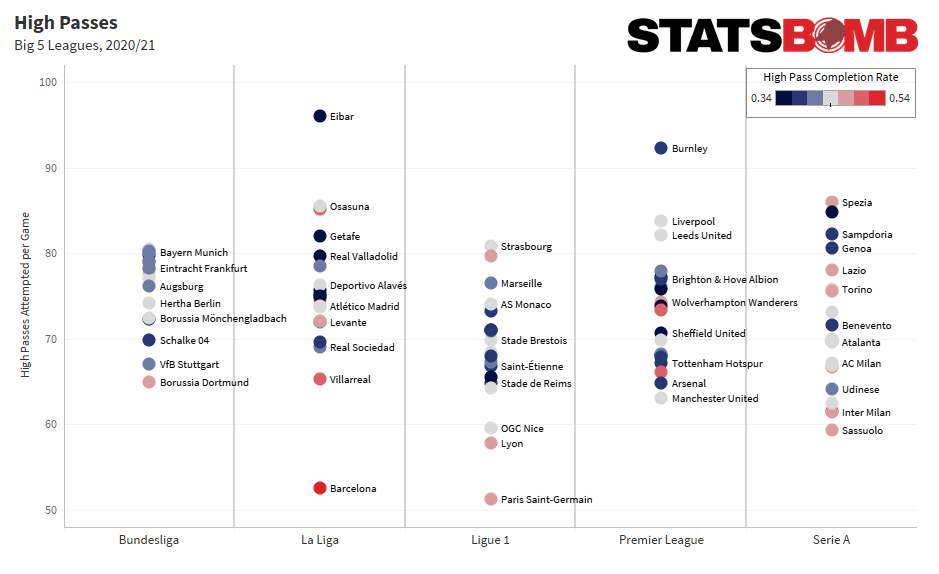 Barcelona and PSG are seemingly completely averse to seeing the ball leave the grass, looking to find the feet of their teammates as often as possible, though Barcelona are able to complete their High passes at an impressive 52% clip, the highest rate in the Big 5, when they do dare to lift the ball above ankle height.
Barcelona and PSG are seemingly completely averse to seeing the ball leave the grass, looking to find the feet of their teammates as often as possible, though Barcelona are able to complete their High passes at an impressive 52% clip, the highest rate in the Big 5, when they do dare to lift the ball above ankle height.
Despite being a very strong team in their division, it’s perhaps not a surprise to see Liverpool rank 2nd in the Premier League for High pass volume given what we know about their propensity for switching play. Known laser-ball executor Trent Alexander-Arnold makes up 21% of all Liverpool's High Pass attempts per game.
If you're susceptible to getting a stiff neck, you should probably avoid going to an Eibar game anytime soon, who continue their devotion to the “Launch and Squish” (©Daryl Morey) approach implemented by long-term managerial incumbent José Luis Mendilibar. Eibar play the ball long and then press up the pitch to compress the space, keeping the game away from their defensive territory as much as possible. Besides playing the most High passes of any team in the Big 5, Eibar also make a higher percentage of their pressures in the opposition half than any other team in La Liga.
Launch.
Then squish.
Beyond the raw volumes, we can also look at the portion of a team’s passes that are played “Long” (High passes over a distance greater than 30m) or short (Ground passes over a distance lesser than 30m).
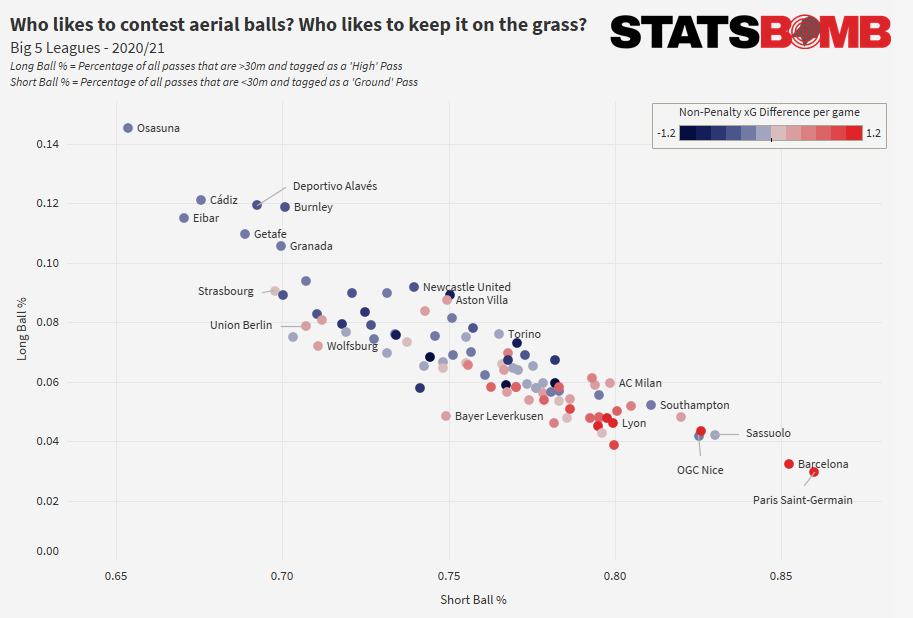
Here we can see that perhaps it’s Osasuna instead of Eibar that deserve the title of being the most “long ball” team in Europe’s top tiers, with a full 1-in-7 of their passes being played high and long. Looking at footedness now, and bearing in mind the majority of football players are right-footed, it’s always interesting to know the left/right balance a team strikes when building their squad.
It’s natural for a team to have at least one left-footed player – usually the left back – but elsewhere there’s normally a tactical adjustment to be made - usually an inverted winger - to compensate for the lack of balance in footedness within the side. These are the most right-footed teams in the Big 5, as measured by the percentage of their passes played by right feet:
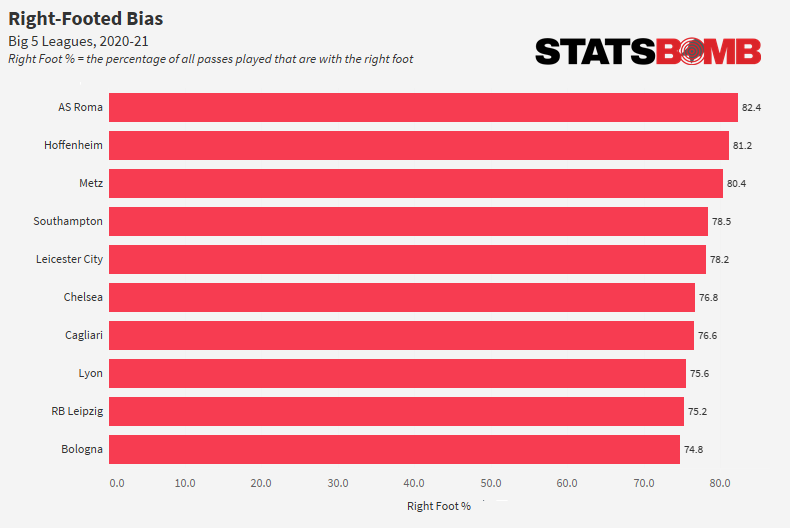
…and these are the most left-footed:
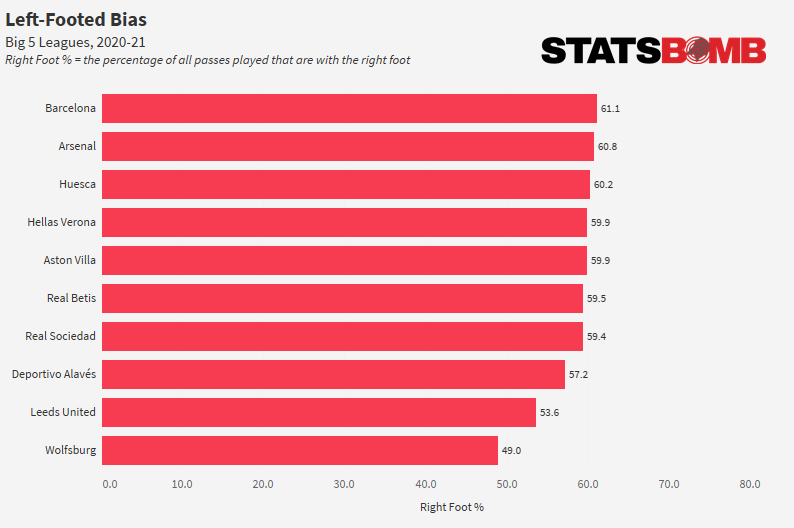
So, Wolfsburg are the only team in the top European leagues that make more passes with their left feet than right. To better visualise this, we can compare the average pass locations of their players, as well as the footedness of those players, with those of the most right-footed team in the Big 5, AS Roma.
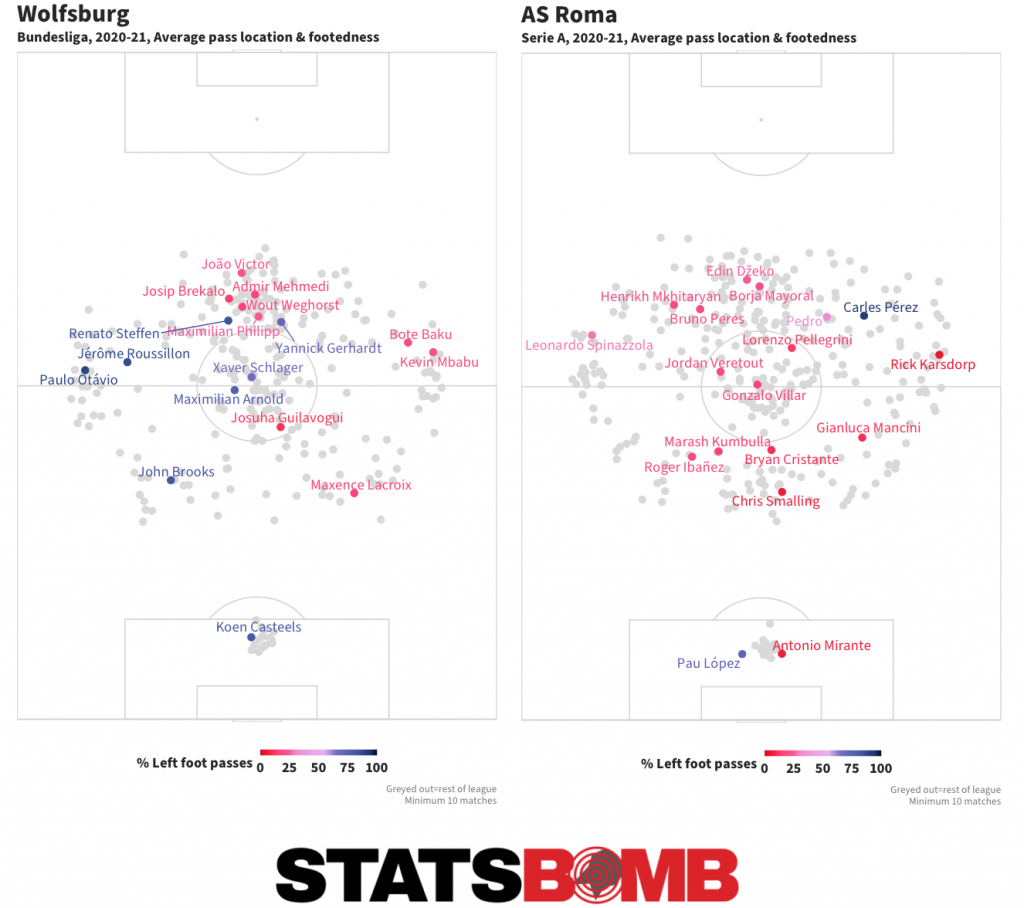
It’s stark that even Roma left wingback Leonardo Spinazzola is predominantly right-footed, whereas Wolfsburg have a perfect balance between left and right footers, allowing wide players Renato Steffen and Josip Brekalo to swap wings with regularity, or rotate for Bote Baku on the right wing if the team needs a little more width.
On a player level, being competent with both feet has obvious utilities in possession: predominantly it opens up way more angles for a pass, therefore making more passes available, which also enhances a player’s ability to play under pressure, knowing they can go either way around the opposition pressure. Here are the pass volumes by each foot of all players in the Big 5 with at least 900 minutes played and a minimum of 10 open play passes per 90.
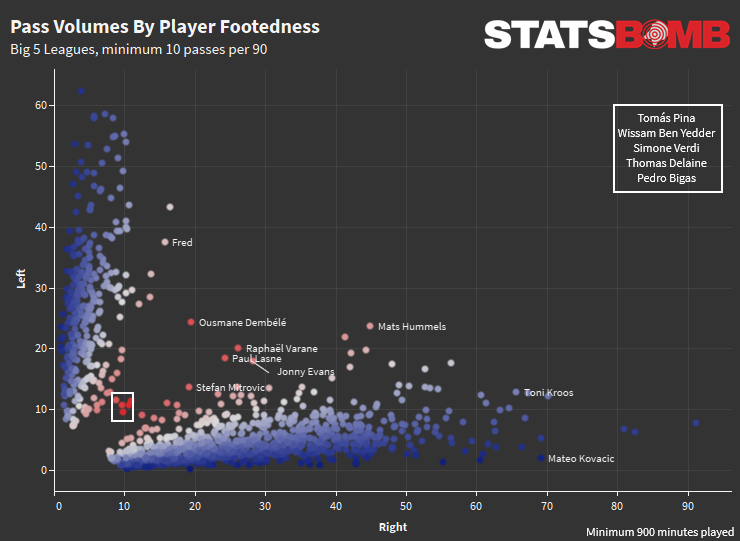
Notorious ambipede (is that a word? It is now) Ousmane Dembélé stands out, completing a high volume of passes with either foot. But he’s only the 5th-most two-footed player if we’re looking for an even split between left and right-footed passes.
That title falls to Alavés midfielder Tomás Pina who, with 188 completed left-footed passes and 187 completed right-footed passes, just edges out Pedro Bigas (171-174) of Eibar for the title. It’s also worth noting that Torino, by accident or design, have three of the 15 most ambipedal players in the Big 5.
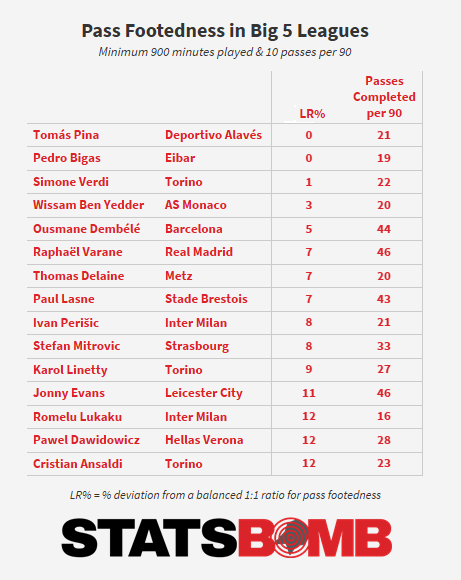
And there you have it, a surface-level scratch at what can be possible with data that provides height and footedness of all passes played in each match. Come along to StatsBomb Evolve on March 17th if you want to find out how we're adding even more context to passes, and a whole lot more.
Join us at StatsBomb Evolve on March 17th 2021 to discover how we're going to change the football industry, including the launch of our new data product, StatsBomb 360. To find out more, click here.
